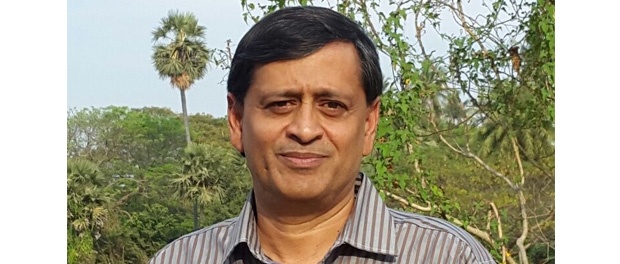The South Indian fruits and vegetable market size is more than $3 billion. Less than five percent is currently sourced by big retailers directly from farmers. The opportunity is immense. The next wave of sourcing will use advanced technology and analytics, says Kumar Ramachandran, CEO of GS Farm Taaza, a leader in the B2B sourcing segment
It’s a shame that 30% to 40% of fruits and vegetables grown in India get spoilt because of too many touch points in the supply chain – with several middlemen handling them. Whoever reduces the touch points and sources directly from the farmers has a big business opportunity awaiting them.
That’s what Farm Taaza is attempting to do. Started in 2015 by Kumar Ramachandran and funded by Silicon Valley angel investors, the company has done a turnover of Rs. 20 crore in 2016. It hopes to cross a turnover of Rs. 40 crore in 2017-18 and be close to breakeven by then. “We are a leader in the back end of the sourcing business, all the other big names we hear are in the front-end sourcing,” Mr. Ramachandran told Benedict Paramanand of SustainabilityNext.
Edited excerpts:
Why should farmers be interested in Farm Taaza?
We plan to implement solutions where our farmers can plan their harvesting dates to meet our requirements and offer to pick up the produce completely. We pay farmers on time. And pay for exactly what they offers (in terms of weight) and we tell them what we need and we also give a forecast. We are starting to treat farmers like professionals so after every payment we also give them payment advice showing what they delivered and what we paid. They also can get historical data on our purchases from them.
We are trying to solve forecasting problems by using analytics. We tell the farmers what we want a week or a few days before, though our customers give their orders only a day before delivery.
We now have a mobile app giving real time information on prices and delivery status. The next wave – the system will tell me how to price, where and how much to procure. We plan to provide expert advice to the farmers on improving the yield and field operations as well. This could be through partnership with many Agri-Tech startups that are now expanding in this critical space.
How’s the competition?
This is a very unorganized business and operates the way it has been for past 100 years; along with many ethical challenges. We welcome organized competition since the size of the pie is so huge. Even if each of us takes 5% to 10% market share it will make a big difference to the segment.
In the B2B segment, organized players do less than 1 % today.
We supply directly to large hospitals, kirana stores, hotels and some supermarket chains as well across Bengaluru and Mangaluru in Karnataka, Chennai and Coimbatore in Tamil Nadu, and Hyderabad. Most large retail chains are our customers today.
Why should they take from you?
We tell them where the produce comes from, when it was harvested. Freshness is assured by making the produce available to the customer within 8-22 hours of harvesting. The produce is optimally packed and transported and graded at the source only to reduce spoilage.
Role of Technology
Unless we use complete technology, we cannot solve supply chain problems. We are still in the first phase of technology application. What we call as leakage – we have reduced it by 70% and our next goal is next 90%. By end of this year will be moving to machine learning algorithm based solutions using analytics to further improve our capability and profitability.
Future Plans
By May 2018 – we will break-even. I don’t want to scale for the sake of scale. We don’t want to a billion dollar business; we want to be a profitable billion dollar business. Farm Taaza may have a shot at that number in five years. That’s where we are headed. Market is there.
Most startups in this and similar areas focus on the front-end (Customer App). Our priority is to fix the supply chain first along with our unit economics. When I clean the back-end and move to a technology-based decision-making approach, the world
is ours.
Social impact business
Ramachandran and his wife Meena were tired doing the back and forth trips between the United States and India for three decades. They heeded their daughter’s advice to focus on a business which could have a massive
social impact.
He started teaching in New Jersey in 1984. Moved to work in Michigan, then to Silicon Valley in 1991. Set up semi-conductor company Applied Materials in India in 2002. Did a start-up in 2005 on product design software – didn’t want to be a big but a niche player and sold this in 2014. Started a LED lighting company in 2009 and sold it in 2011.






